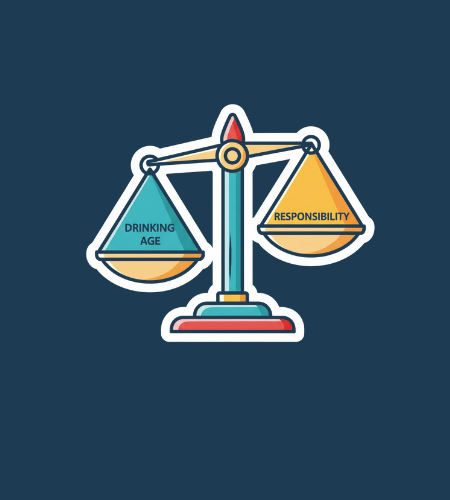National Legal Drinking Age Day is observed in the United States on July 21 every year, celebrating both the milestone of legal adulthood and the critical importance of responsible alcohol consumption under the law.
History of Legal Drinking Age
After Prohibition was repealed in 1933, most U.S. states set their drinking age at 21—aligned with adulthood at the time. However, in response to the 26th Amendment in 1971, which lowered the voting age to 18, nearly 30 states also lowered their drinking age to 18, 19, or 20. This spike in youth drinking correlated with rising alcohol-related traffic crashes among teens, prompting concern. In response, Congress passed the National Minimum Drinking Age Act of 1984, mandating that states adopt 21 as the purchase and public possession age or risk losing federal highway funding. By 1988, all states complied, returning the MLDA to 21.
The selection of July 21 appears tied to Ernest Hemingway’s birthday—a nod to literary and cultural connections—though the day’s primary goal remains raising awareness on responsible drinking and public safety.
Why Legal Drinking Age Day matters
This day isn’t just a reason to toast—it reminds us of a crucial lesson: age thresholds protect young people and communities. Research shows higher drinking ages correlate with lower alcohol-related crashes and fewer injuries among youth. It also safeguards developing brains: studies indicate that drinking at a younger age can impair neural growth and decision-making capacity. National Legal Drinking Age Day prompts reflection on why such safeguards matter—from public health to individual welfare.
Beyond numbers, the day encourages open conversation about responsible adulthood: owning choices, knowing limits, and understanding alcohol’s social and legal implications. It reminds us that legality and maturity must go hand in hand, and that making informed choices strengthens both personal and community health.
- It highlights that age limits helped reduce teen drunk-driving deaths
- It underscores that maturity and brain development take time
- It emphasizes that responsibly enjoying alcohol matters just as much
- It encourages community conversation around alcohol, safety, and choice
- It promotes awareness of alcohol laws and their social impact
How to observe Legal Drinking Age Day
Marking the day can be both thoughtful and celebratory. If you’re 21 or older, toast responsibly—perhaps recreate your first legal drink or try a Hemingway Daiquiri in homage to July 21. Make it meaningful: pair the experience with conversation about what responsible use means for you or younger people in your life.
Alternatively, spend the day learning: read about the history of MLDA laws, the brain science behind youth drinking, or the impacts of DUI. Share facts online using #LegalDrinkingAgeDay, or host a small get-together with friends where everyone commits to safe choices—assign a designated driver or enjoy mocktails together.
- honor your first legal drink (or try one) thoughtfully
- raise awareness about safe, moderate alcohol consumption
- re-share research on reasons behind the age‑21 limit
- start a constructive chat with teens or young adults
- host a small gathering with emphasis on designated driving
Doctors always remind us that there is no safe dose of alcohol for health. Take care of yourself! Be an example for your family and friends!
National Legal Drinking Age Day Dates Table
| Year | Date | Day |
|---|---|---|
| 2025 | July 21 | Monday |
| 2026 | July 21 | Tuesday |
| 2027 | July 21 | Wednesday |
| 2028 | July 21 | Friday |
| 2029 | July 21 | Saturday |
Subscribe to our newsletter and never miss a holiday again!

